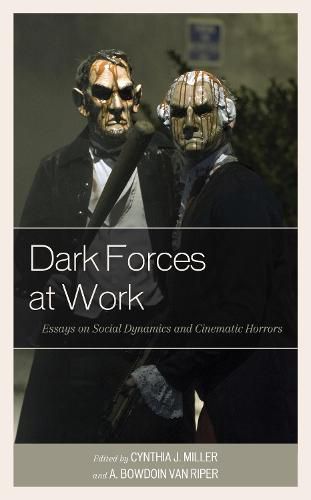Readings Newsletter
Become a Readings Member to make your shopping experience even easier.
Sign in or sign up for free!
You’re not far away from qualifying for FREE standard shipping within Australia
You’ve qualified for FREE standard shipping within Australia
The cart is loading…






Dark Forces at Work examines the role of race, class, gender, religion, and the economy as they are portrayed in, and help construct, horror narratives across a range of films and eras. These larger social forces not only create the context for our cinematic horrors, but serve as connective tissue between fantasy and lived reality, as well.
While several of the essays focus on name horror films such as IT, Get Out, Hellraiser, and Don’t Breathe, the collection also features essays focused on horror films produced in Asia, Europe, and Latin America, and on American classic thrillers such as Alfred Hitchcock’s Psycho. Key social issues addressed include the war on terror, poverty, the housing crisis, and the Time’s Up movement. The volume grounds its analysis in the films, rather than theory, in order to explore the ways in which institutions, identities, and ideologies work within the horror genre.
$9.00 standard shipping within Australia
FREE standard shipping within Australia for orders over $100.00
Express & International shipping calculated at checkout
Dark Forces at Work examines the role of race, class, gender, religion, and the economy as they are portrayed in, and help construct, horror narratives across a range of films and eras. These larger social forces not only create the context for our cinematic horrors, but serve as connective tissue between fantasy and lived reality, as well.
While several of the essays focus on name horror films such as IT, Get Out, Hellraiser, and Don’t Breathe, the collection also features essays focused on horror films produced in Asia, Europe, and Latin America, and on American classic thrillers such as Alfred Hitchcock’s Psycho. Key social issues addressed include the war on terror, poverty, the housing crisis, and the Time’s Up movement. The volume grounds its analysis in the films, rather than theory, in order to explore the ways in which institutions, identities, and ideologies work within the horror genre.